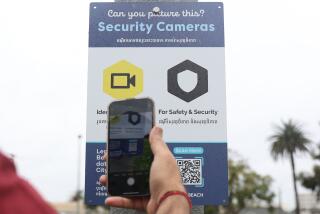NEWPORT BEACH : City Programs Itself Into Computer Era
- Share via
Newport Beach Utilities Director Bob Dixon would like to have every fire engine in the city equipped with a computer screen. When a 911 call comes in, a firefighter would use a laptop keyboard to enter the address into the computer.
The machine would automatically map out the quickest route to the emergency, pinpointing the nearest hydrants and their current water pressure, marking the location of a nearby hazardous waste storage site and printing out the phone number of the building’s owner.
Just a wish list? Well, not in Newport Beach, where city planners are in the midst of putting together a comprehensive computer mapping and filing system.
Dubbed the Geobase system, the 3-year-old project is a point of pride for Dixon, who argues that the data retrieval system will make city government more efficient and responsive. The system provides a way for city maps to be coded with layers and layers of information, ranging from the location of water mains to the typical traffic patterns during a weekend afternoon.
With all that information in a central computer base, city planners, building inspectors and even residents will be able one day to plug into a single information network. The system would decrease the amount of time required to search maps or printouts and increase the level of accuracy and adherence to city standards, officials said.
“The information has always been here, but there have been bits here and bits there,” said utilities analyst Paul Malkemus.
An advantage to the system is that the information retrieval will no longer be dependent on the department employees, Dixon said.
“I remember we had one gentleman who retired after 40 some years with the city,” he said. “I realized that all that knowledge was retiring with him. In two years (with other retirements) we had something like 150 years of employee knowledge retire.”
Fiscal 1986 was the first year that the city spent money on the Geobase system. Since then, the average budget has set aside an average of $320,000 for the computer hardware, software and licensing agreements, Dixon said.
But the department is still a long way from being finished. Dixon estimates that it will take another five to seven years for all the information to be keyed into the computer. And the project doesn’t stop there, since the system will always have to be updated.
One of the more important projects is converting maps, which for many years were drawn using the traditional grid system of the Spanish colonists. That method gave way to mapping through temporary landmarks such as trees or streets. The goal now is to generate maps digitally, using longitude and latitude as standard locaters.
More to Read
Sign up for Essential California
The most important California stories and recommendations in your inbox every morning.
You may occasionally receive promotional content from the Los Angeles Times.










